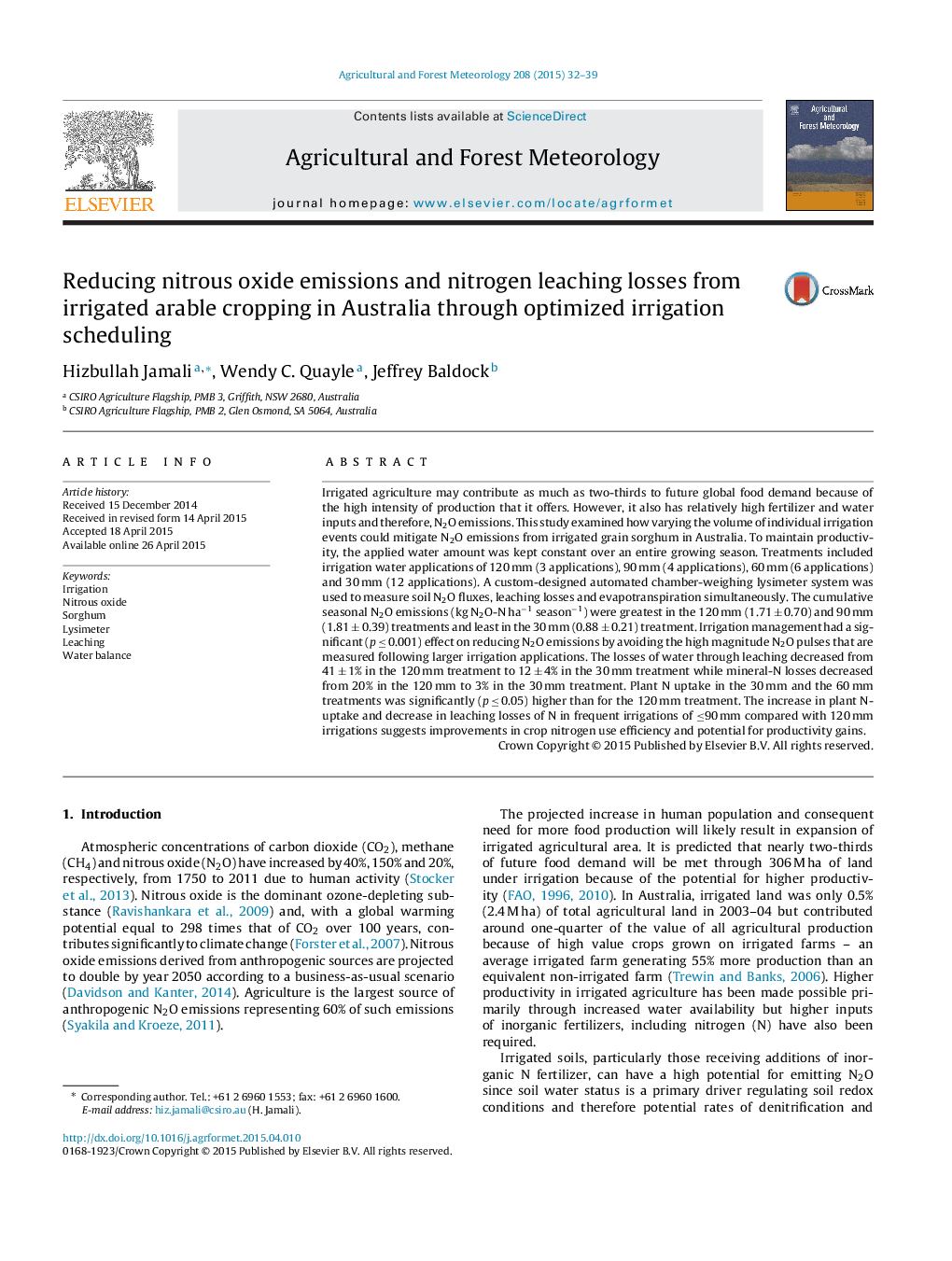| کد مقاله | کد نشریه | سال انتشار | مقاله انگلیسی | نسخه تمام متن |
|---|---|---|---|---|
| 81590 | 158327 | 2015 | 8 صفحه PDF | دانلود رایگان |
• Total irrigation was kept same for all treatments.
• Irrigation applied in events of 30 mm, 60 mm, 90 mm and 120 mm.
• N2O, leaching and evapotranspiration was measured.
• Lower N2O emissions in 30 mm and 60 mm treatments.
• Leaching losses were reduced in ≤90 mm treatments.
Irrigated agriculture may contribute as much as two-thirds to future global food demand because of the high intensity of production that it offers. However, it also has relatively high fertilizer and water inputs and therefore, N2O emissions. This study examined how varying the volume of individual irrigation events could mitigate N2O emissions from irrigated grain sorghum in Australia. To maintain productivity, the applied water amount was kept constant over an entire growing season. Treatments included irrigation water applications of 120 mm (3 applications), 90 mm (4 applications), 60 mm (6 applications) and 30 mm (12 applications). A custom-designed automated chamber-weighing lysimeter system was used to measure soil N2O fluxes, leaching losses and evapotranspiration simultaneously. The cumulative seasonal N2O emissions (kg N2O-N ha−1 season−1) were greatest in the 120 mm (1.71 ± 0.70) and 90 mm (1.81 ± 0.39) treatments and least in the 30 mm (0.88 ± 0.21) treatment. Irrigation management had a significant (p ≤ 0.001) effect on reducing N2O emissions by avoiding the high magnitude N2O pulses that are measured following larger irrigation applications. The losses of water through leaching decreased from 41 ± 1% in the 120 mm treatment to 12 ± 4% in the 30 mm treatment while mineral-N losses decreased from 20% in the 120 mm to 3% in the 30 mm treatment. Plant N uptake in the 30 mm and the 60 mm treatments was significantly (p ≤ 0.05) higher than for the 120 mm treatment. The increase in plant N-uptake and decrease in leaching losses of N in frequent irrigations of ≤90 mm compared with 120 mm irrigations suggests improvements in crop nitrogen use efficiency and potential for productivity gains.
Journal: Agricultural and Forest Meteorology - Volume 208, 15 August 2015, Pages 32–39
